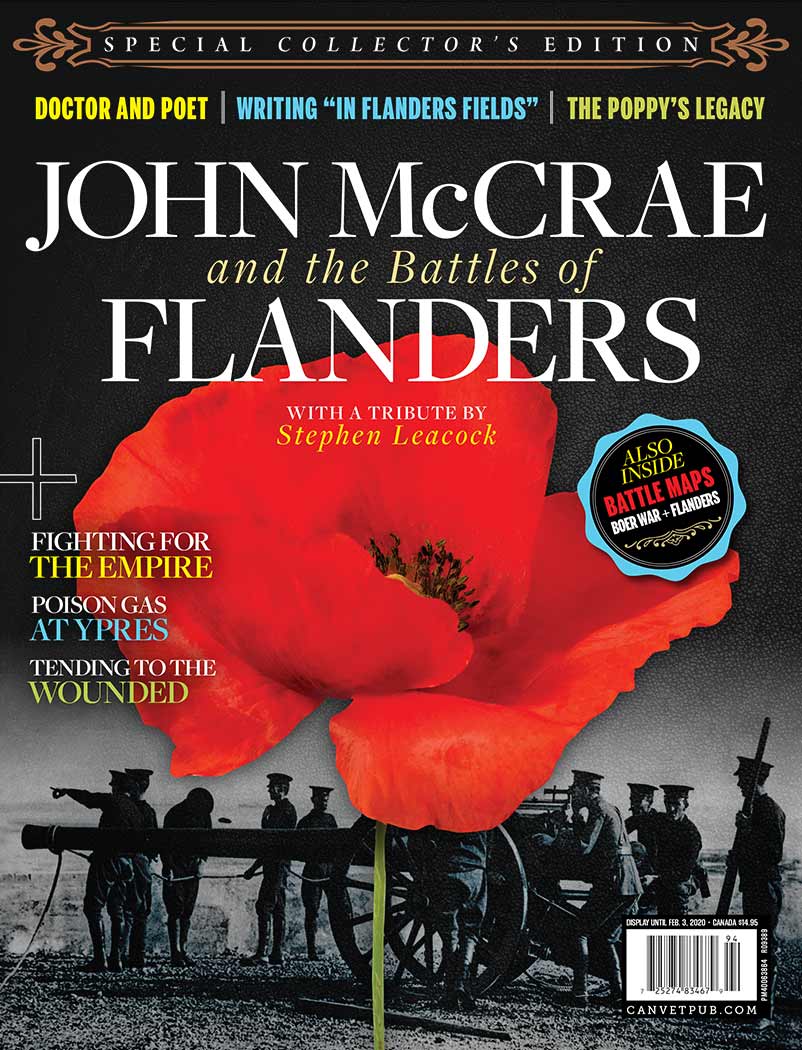
The Ypres Salient in Belgium was mostly a quagmire in the spring of 1915. The ground was torn up from countless artillery blasts, and makeshift fortifications and a network of sandbagged trenches lead to and along the front. Wrecked vehicles and dead bodies lay scattered about no man's land.
Belgian farmers had been spreading manure on these fields for centuries, and the battlefields were breeding grounds for disease. Soldiers struck by flying metal faced another menace as they lay with open wounds on the contaminated ground. Few trees remained standing. Virtually nothing could grow in that morass. Nothing except a tenacious little wildflower: the poppy.
The Canadian Corps was going through a harrowing period. It had seen some action earlier in the war, but the first true test of its mettle was the Second Battle of Ypres, when the enemy introduced poison gas as a weapon. Casualties were heavy, yet the Canadians showed great restraint and courage and did not break their lines. Through it all, the poppy returned every spring, when almost nothing else would grow. Its vivid colour in the fields reminded soldiers of blood being shed. It inspired John McCrae, then a brigade surgeon with the Canadian Field Artillery, to write about the flowers in his famous poem “In Flanders Fields.”
John McCrae was born and grew up in Guelph, Ont., the son of a militia officer who owns and operated successful wool and lumber mills. McCrae attended the University of Toronto, studied medicine and joined the militia.
At age 27, McCrae took a break from his medical studies and went to South Africa as an artillery officer to fight in the Boer War. While most of his time was spent on routine garrison duty, McCrae distinguished himself in battle.
McCrae graduated from medical school and began a successful career as a lecturer at McGill University in Montreal. He beccame friends with the humourist Stephen Leacock and served as a doctor on Governor General Earl Grey’s overland expedition to Hudson Bay.
When the First World War started, McCrae goes overseas as an artillery officer and brigade surgeon. He operated a dressing station during the Second Battle of Ypres in 1915 where gas was used for the first time in modern warfare.
During the Second Battle of Ypres, McCrae’s friend and fellow artillery officer Alexis Helmer was killed and McCrae led the religious service at his funeral. Shortly afterward, McCrae was seen writing a poem during a lull in the fighting.
Much to his disappointment, McCrae was ordered to leave the artillery and take up duties as a doctor at No, 3 Canadian General Hospital (McGill) in France. His poem became popular with the troops and was used to sell Victory bonds in Canada.
McCrae dies during the war but his poem lives and becomes the inspiration for The Royal Canadian Legion’s poppy campaign. The campaign continues to this day where it raises millions of dollars annually to help veterans in need.